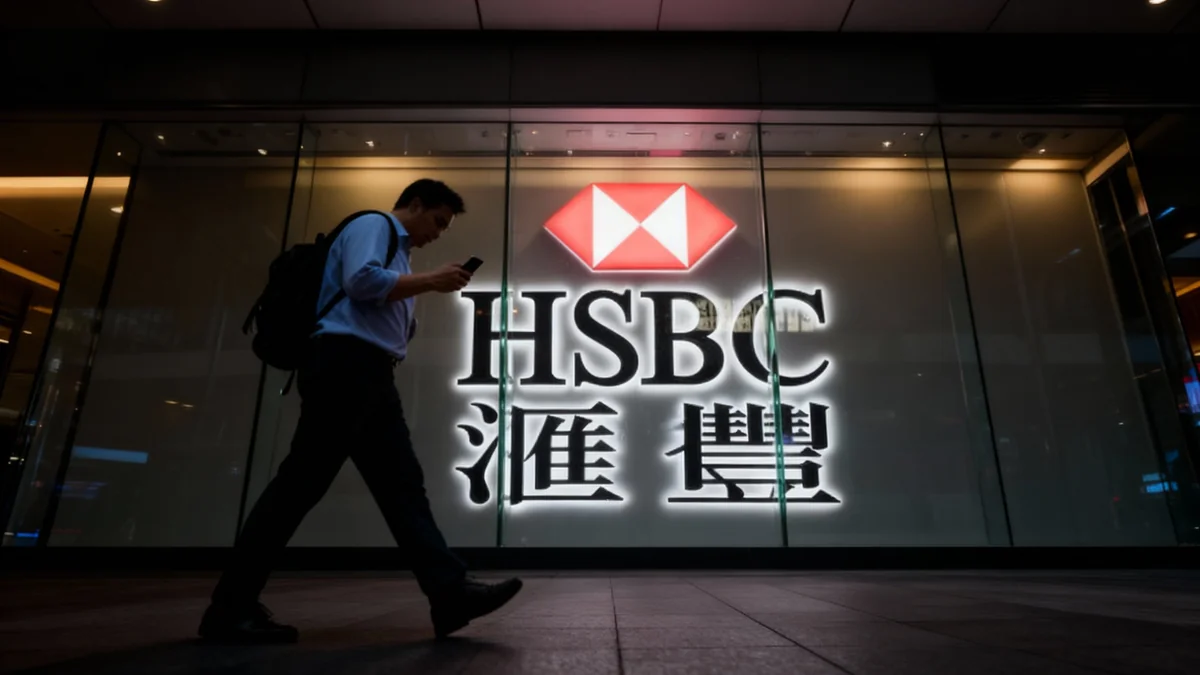HSBC's Chief Financial Officer, Pam Kaur, has issued a warning regarding potential difficulties for hedge funds and smaller banks with exposure to private credit losses. This alert comes as the banking giant reported a 14 percent drop in third-quarter profits to $7.3 billion, despite lifting its underlying profit guidance for the full year 2025.
Ms. Kaur emphasized that while HSBC's own credit performance remains strong, the primary concern lies with the 'second and third order risks' posed by counterparties. These smaller institutions may lack the financial capacity to absorb significant defaults from borrowers, making this a key area of focus for the bank.
Key Takeaways
- HSBC warns of 'second and third order risks' from private credit exposure.
- Third-quarter profits fell by 14% to $7.3 billion.
- Bank lifted full-year profit guidance to '$43 billion or better' for 2025.
- A $1 billion provision for expected credit losses was recorded.
- Legal costs, including Madoff settlement, impacted profit by $1.4 billion.
HSBC Navigates Complex Financial Landscape
HSBC's third-quarter results reveal a mixed financial picture. The reported profit before tax for the quarter, after stripping out one-off costs, stood at $9.1 billion, marking a 3 percent increase. This rise indicates a solid underlying performance despite the headline profit fall.
The bank's net interest margin, a crucial indicator of profitability from lending, expanded to 1.57 percent. This represents an increase of 0.11 percentage points from the previous year, suggesting improved profitability from its core lending activities.
Key Financial Figures (Q3)
- Reported Profit: $7.3 billion (down 14%)
- Underlying Profit (pre-tax): $9.1 billion (up 3%)
- Net Interest Margin: 1.57% (up 0.11 percentage points)
- Credit Loss Provisions: $1 billion
Concerns Over Counterparty Risk
Ms. Kaur's concerns about private credit mirror recent sentiments from other major financial leaders. Jamie Dimon of JP Morgan, for example, previously compared soured loans to 'cockroaches,' indicating that problems rarely appear in isolation. This highlights a broader industry awareness of systemic risks within the private credit market.
HSBC's direct exposure to private credit is described as small. However, the bank remains vigilant about its counterparties, particularly hedge funds and smaller banks. These institutions might not possess the necessary capital buffers to absorb significant losses if private credit borrowers face widespread defaults.
"The thing that worries me most is the second and third order risks from counterparties that might be affected," Pam Kaur stated. "Smaller institutions might not have the loss-absorbing capacity to withstand a high level of defaults by borrowers. This was a prime area of focus for us."
Impact of Legal and One-Off Costs
The reported 14 percent fall in third-quarter profits was significantly influenced by substantial one-off costs. HSBC faced a $1.4 billion bill for legacy legal issues during the quarter. This included a $1.1 billion provision for settling compensation claims related to the Bernie Madoff fraud of 2008, an issue that has lingered for years.
Additionally, the bank absorbed a $300 million one-off hit from a withholding-tax investigation initiated by French authorities. These combined charges significantly impacted the bank's headline profitability for the period.
Credit Loss Provisions and Regional Exposures
HSBC set aside $1 billion for expected credit losses in the third quarter. This figure is stable compared to a year earlier. These provisions included a 'small number of exposures in the UK,' as well as additional funds for potential losses in Hong Kong real estate and from a Middle Eastern borrower.
While UK loan losses appeared high, Ms. Kaur described them as "not that abnormal." This suggests that while specific challenges exist, they are within the bank's expected range of credit performance.
What is Private Credit?
Private credit refers to debt financing provided by non-bank lenders, such as private equity funds, hedge funds, and specialized debt funds. It often involves direct lending to companies, particularly middle-market firms, that may find it challenging to access traditional bank loans. While offering higher returns, it can also carry increased risks due to less regulatory oversight and lower liquidity compared to public debt markets.
Strategic Outlook and Market Reaction
Despite the dip in reported profits, HSBC has raised its profit guidance for the full year 2025. The bank now expects total net interest income to be "$43 billion or better." It also anticipates a "mid teens or better" increase in return on tangible equity before one-off costs.
This optimistic outlook reflects strong performance in its wealth management operations, even as income from foreign exchange and debt and equity businesses saw declines. The market reacted positively to the news, with HSBC shares rising 3 percent to £10.34 in London and 3.5 percent to $105.60 in Hong Kong.
Leadership and Market Position
HSBC is London's second-biggest listed company, holding a market value of £173 billion. It employs 211,000 people globally and manages a balance sheet of $3.2 trillion. While its primary focus remains Asia, particularly Hong Kong, it maintains a significant retail banking presence in the UK.
The bank is currently undergoing a cost-cutting plan, aiming to save $1.5 billion annually by 2027. It recently suspended share buybacks for at least three quarters to conserve cash for the £10.7 billion buyout of its Hong Kong subsidiary, Hang Seng. Ms. Kaur reiterated the bank's commitment to both Hong Kong and Britain as its "two home markets."
The search for a permanent chair continues after Sir Mark Tucker's departure in September, with Brendan Nelson serving as a stand-in. The third-quarter dividend remained unchanged at 10 cents per share.





